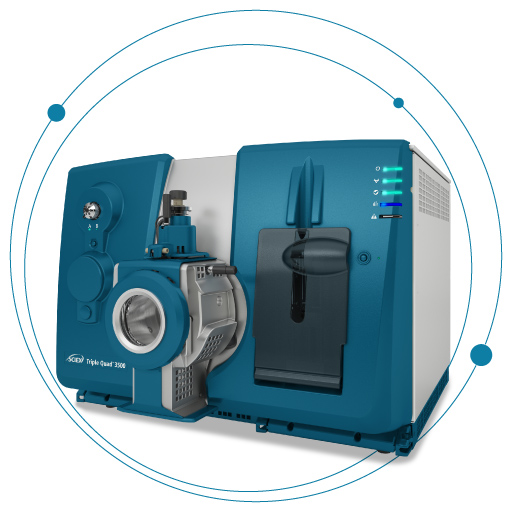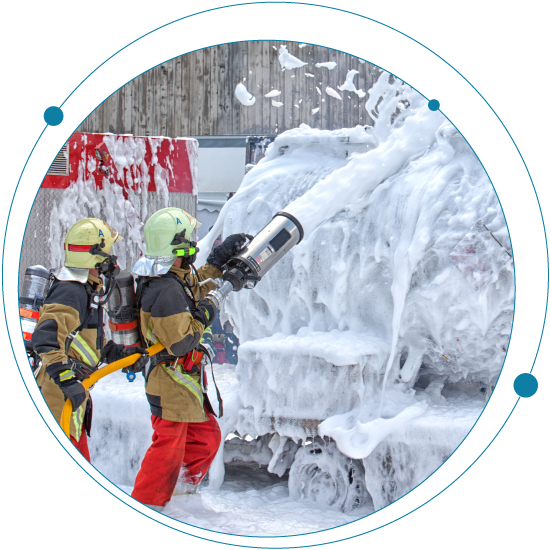The latest releases of Analyst Software 1.7 and SCIEX OS Software 1.4 introduce a new licensing model called concurrent licensing. If you want flexibility and cost savings when purchasing and using your processing software, concurrent licensing is for you. How does...
Tags
Overcoming uncertainty in your PFAS analysis
Just like gum on the bottom of a shoe, the existence of per- and poly-fluorinated alkyl substances (PFAS) in our environment is a sticky one. If you’re in the field of environmental testing, then you’re all too familiar with the threat these substances have on public health. While we have learned a lot about them over the years, there is still much more to understand. With the right detection methods, we can gather the information we need to empower us to make informed decisions on reducing the risks they impose.
Questions and answers to help improve your mycotoxin analysis
During a recent webinar I shared method details for mycotoxin analysis on the SCIEX 7500 system. In this blog i will share the Q&A for the submitted questions that we did not have chance to answer during the live webinar.
Relative migration time
How do I set up my processing method to calculate the RRT of the main peak to 10kD in karat 32 software?
Assess the performance of the Echo® MS system
To obtain the best, most reproducible results using the Echo MS system, it is important to select the best solvent for your analyte and matrix and to ensure the flow rate is optimized for your solvent. Please review this flow rate optimization community post to...

Back to the new basics: Part 1 | Making the leap from GC-MS to LC-MS
Producing accurate results quickly in a demanding environment is no easy feat for analytical scientists. What’s more, many of us are constantly questioning ourselves—I certainly am—about whether we are employing the best technique for the analysis at hand.
It’s an overwhelming thought, considering the wide range of tools that are available to choose from, each of which offers varying levels of capacity, sensitivity, selectivity, specificity and cost. How do you meet the unique needs of your organization without breaking the bank? I get it, and I’m not here to convince you it’s easy. My aim is to guide you through the process to help you make the right decision for you.
Switching between different LCs that communicate through ethernet and setting up the correct module IP address
Different LC options are supported in SCIEX OS software and Analyst software. Those that communicate through ethernet differ in their default IP addresses. In this community post, we will detail the LAN setup, configuring the IP address and subnet mask for LC...
MRM method transfer from a SCIEX Triple Quad or QTRAP 6500+ system to the SCIEX 7500 system
General recommendations when beginning method development Objective: The purpose of this document is to provide a quick reference for transferring MRM-based quantification methods from a SCIEX Triple Quad or QTRAP 6500+ system to a SCIEX 7500 system. While the best...

Identifying the unknown PFAS profile in firefighting foams/AFFF
According to a recent study from Harvard University, the US EPA, and NIEHS, traditional targeted analysis techniques poorly characterize the PFAS composition of contemporary PFAS-based firefighting foams, know as aqueous film-forming foams (AFFF). Using the EPA 533 PFAS drinking water method for the analyte list, the researchers found that targeted mass spectrometry methods accounted for <1% of organic fluorine content. This is important because it demonstrates that targeted analysis methods miss nearly all the PFAS compounds in modern AFFF mixtures, thus underestimating the risk to human health and the environment.
High level method optimization considerations for Echo MS system
While an in-depth discussion of method development and optimization for the Echo® MS system is beyond the scope of a community post, here are some points to consider as part of the process: The maximum recommended ion spray voltage for prolonged electrode life is 5000...
sMRM Concurrency Calculator
This excel sheet allows you to quickly estimate the MRM concurrency and approximate dwell time for your Scheduled MRM Algorithm acquisition method. Paste your MRM method with retention times into the input tab then calculate the Excel workbook. Plots will update to...
No Results Found
The page you requested could not be found. Try refining your search, or use the navigation above to locate the post.
No Results Found
The page you requested could not be found. Try refining your search, or use the navigation above to locate the post.